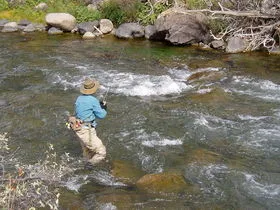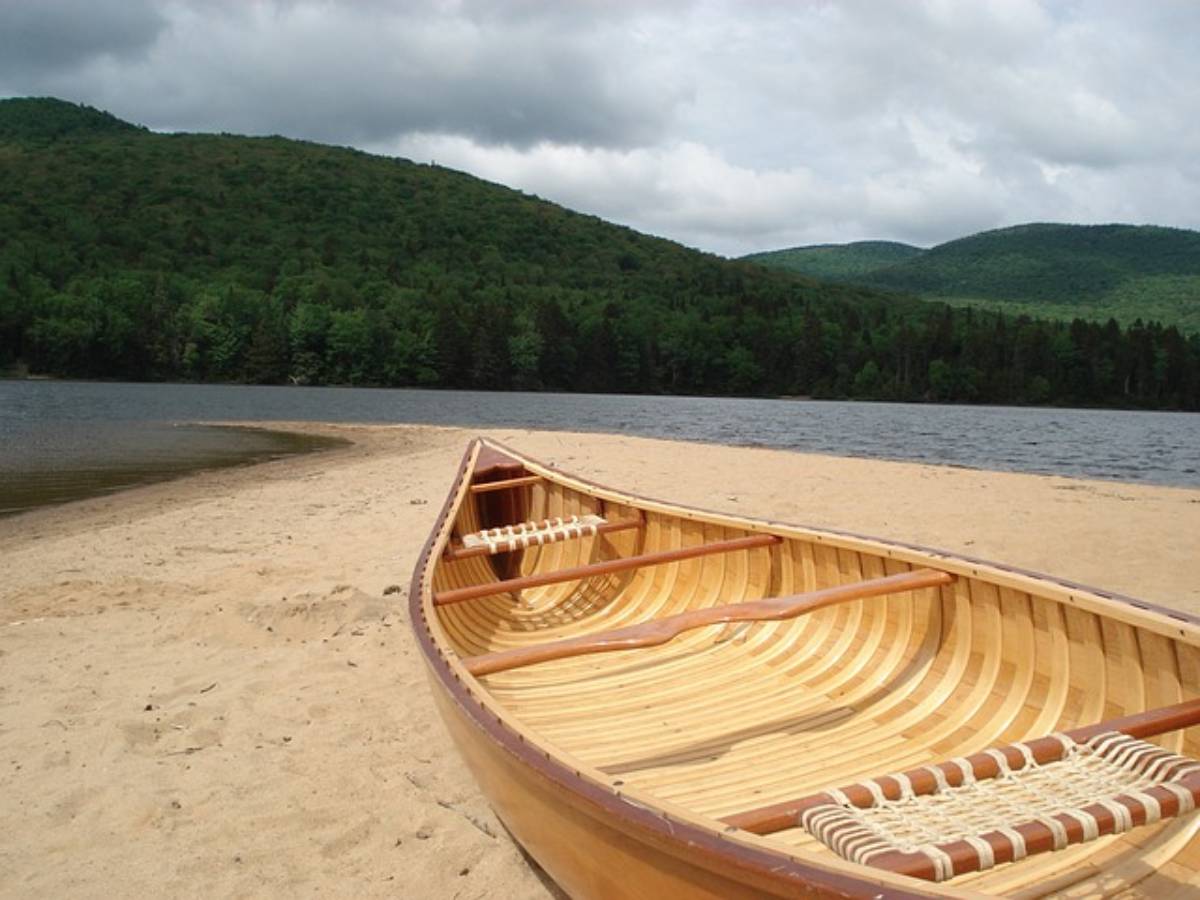When fly fishing, it is important to get as close to the fish as possible without spooking them.

The closer you get, the more accurate your cast will be. However, the closer you get, the more likely you will be to spook the fish as well.
When gamefish are in shallow water or near the surface, they seem to know instinctively that they are in a vulnerable position. It doesn’t take much to spook fish that sense your presence.
Here are several things you can do to prevent fish from becoming aware of your approach…
Approaching Fish
Stalking the fish when you’re fly fishing is part of the adventure.
You can usually get closer when the water is rough than you can if fish are lurking in a calm, quiet pool of water. Whatever the condition when you are stalking fish, you need to use a great deal of stealth.
When you’re within close range of fish, your presentation is more controlled and it is much easier to set the hook, which is called striking.
When fly fishing in a clear brook or stream, be sure not to wade into the water too quickly. This will only send the fish scurrying. If you scare fish out of the shallows, you may as well move on, because they will let other fish know by their movements that danger is near. Instead, as you approach the water, stop and study it and then make a plan on how to approach.
When approaching fish in a calm pool of water, you have to be extra cautious. Try to glide into position without making a lot of noise. Also, be careful not to send out ripples, because fish will sense that danger is near. In most cases, they will not take your fly, even if they do remain in the area of your hook. But 9 times out of 10, they will actually move on instead of staying in the area anyway.
If you’re fly fishing on a big river, fish aren’t spooked as easily, but it still pays to use caution when stalking fish. They have keen sense of hearing that tells them when anything moves underwater.
What Fish Can See
It is interesting to note that running water stops fish from seeing above the surface. That’s why you will want to use long casts when casting wet flies downstream (if the fish are facing upstream).
There will be times when you’ll need to stay low so fish won’t be able to see your silhouette against the sky. Never wear a white fishing hat. It’s best to wear clothing that is a dark color. Don’t move any more than is absolutely necessary. When moving toward a fish, approach directly at it. This makes you appear almost motionless to the fish.
Fish can’t see to the rear. This gives you an advantage of sorts because fish always swim into the current and you can approach fish that are upstream without your presence being detected if you’re careful.
Wading Tips
Wading isn’t as simple as it looks.

First of all, you should wear polarized fishing glasses so you can see what is below the water’s surface.
Most water is full of obstacles such as fallen branches and stones. It’s best to step over these obstacles if possible and always follow wading safety rules. Never use rocks as stepping stones and keep in mind that large, flat rocks are slippery.
It’s best to keep your feet planted firmly on the bottom and use a wading staff to maneuver around the rocks. Move short distances, and always move your upstream foot first. Then bring the downstream foot up beside it. Never place your downstream foot ahead of the one that is upstream, especially if there’s a swift current.
If you doubt whether or not you can move into a certain area, don’t even attempt it.
How Fish React Around Boats
If you are fly fishing a lake or in salt water, you will probably be using a boat — maybe a canoe, a motorboat or a row boat.
In any case, you should try to be as quiet as possible. Don’t slap oars or paddles on the water. If you drop anchor, be sure to do so quietly. Any time something hits the bottom of your boat with a loud thud, the fish will vanish in an instant.
Cut your motor long before you reach the area you want to fish. Move your boat bow into the current to stop the waves from slapping the side of your boat.
Boats are preferable to wading when fly fishing flats and shallows, because you are higher and can spot fish at greater distances. Keep in mind that fish can also see you from farther away.
When fly fishing from a boat, you can’t get as close as you would if you were wading. Don’t even attempt to get as close as you would if wading because you won’t be successful if the fish disappear.



